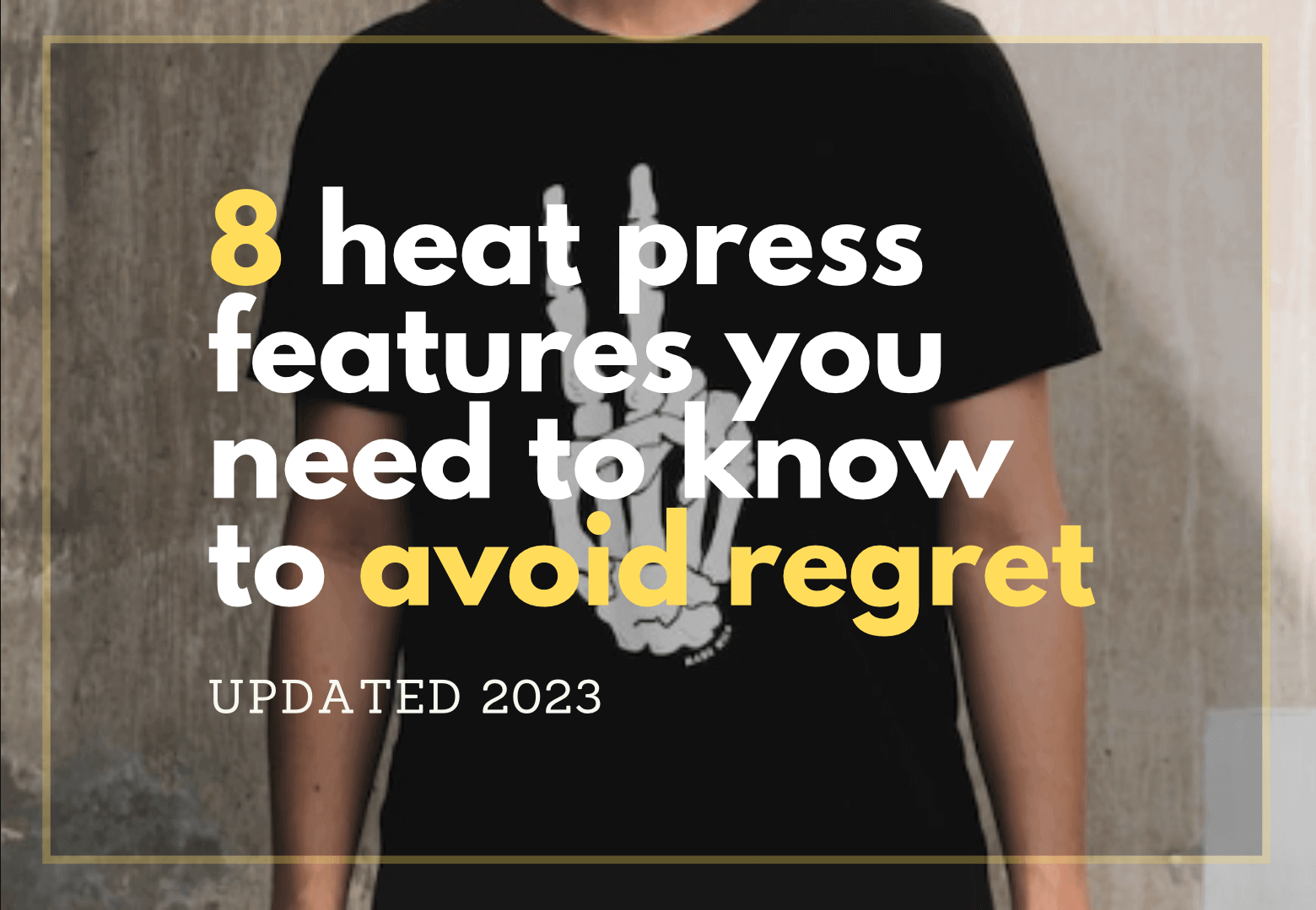
Getting into the garment decoration industry can be both scary and exciting at the same time. If you are just starting to get your feet wet in heat press printing and the various tools that’s needed, it’s perfectly fine to feel overwhelmed.
There is much to learn, but do not worry. The most important thing that you can do is to take the first step. And though the rabbit hole is deep and winding, I’ll help you navigate towards the light.
8 heat press features that truly matter
If you strip away everything, the heat press machine is nothing more than just an oversized iron. All it needs to do is provide even heat, under constant pressure, for a specified amount of time.
However, both you and I know that these are the very features why this versatile machine has evolved so much in the past two decades.
Printers wanted more from their presses, they wanted to increase efficiency, productivity and make more profit. Manufacturers answered them by innovating and improving. Now we have endless bells and whistles to play with.
Sure, some functions were completely useless, nothing more than cheap marketing tactics to get you to pay more. But the features that survived are some truly innovative stuff that actually benefits the user, makes practical sense in the work environment, and adds to the quality of the output.
Here are the eight things you should consider when purchasing a heat press in 2023.
Threadability
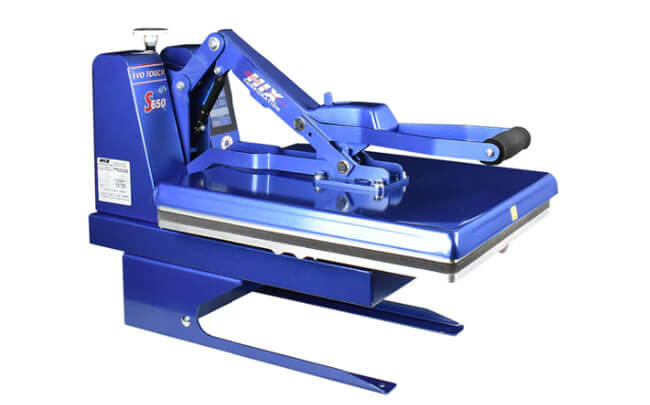 Most modern heat presses have an elevated lower platen. This standard feature makes it easy to slide a t-shirt onto the platen, press, and pull the t-shirt off. If you need to print on the reverse, you can pull it off and slide it back on without hassle.
Most modern heat presses have an elevated lower platen. This standard feature makes it easy to slide a t-shirt onto the platen, press, and pull the t-shirt off. If you need to print on the reverse, you can pull it off and slide it back on without hassle.
But this is for the common folks.
Threadability provides extra space under the lower platen and allows it to go inside the garment when it’s placed on the press. This allows you to heat press only one side of the garment at a time.
It’s a nifty innovation that will save time and increase productivity when you’ve got 500+ orders to fill.
Top heat presses with this threadable platens:
- HIX EVO PRO S650 Auto-Open Clamshell Heat Press
- Geo Knight Twin Automatic Digital Combo Swing-Away Press
- Stahls’ Hotronix Table Top Air Fusion IQ Heat Press
Digital Timer and Temperature
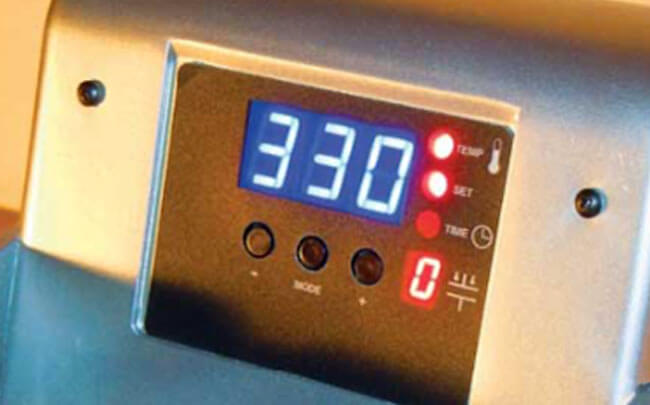
Gone are the days when you have to keep track of time on your mobile phone or rely on a classic kitchen dial timer. You can also forget playing the guessing game of twisting analog temperature knobs.
Heat presses these days come equipped with both time and temperature digital meters. Having both may seem unnecessary, but in the real world it will make you more efficient with less to deal with and that is a huge plus in my book.
Keep in mind that if you’re procuring heat transfers or applications from another country or region, and the instructions are written using celsius instead of Fahrenheit, having a digital temperature that accurately displays both will save you a lot of time.
Top heat presses with digital timer and temperature readers:
- Stahls Hotronix Maxx 16×20 Heat Press
- Geo Knight DK16 Clamshell Heat Press
- HIX EVO TOUCH HT-400 Clamshell Heat Press
Auto-open
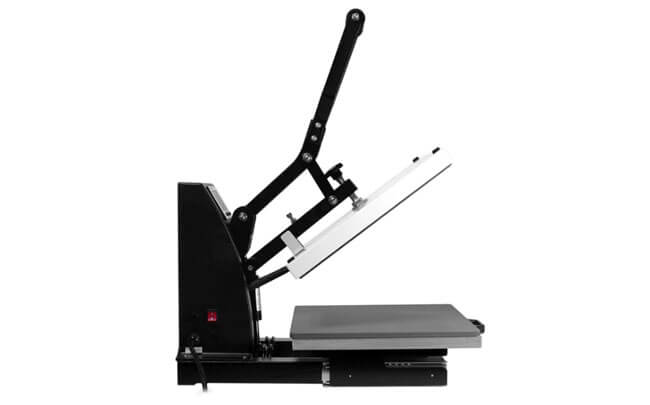
An important feature especially for those with physical limitations or issues in their joints (hands, wrist or shoulders). It is also great for those expecting a ton of work down the line, or those who are doing a lot of pressings in one day, for example during trade fairs or exhibitions.
This feature automates the heat transfer process by releasing the heat press’ top platen once the timer goes off. It’s not only effective in reducing fatigue (with a foot pedal controller), but also reduces the risk of overheating the garment and application, while increasing production time.
The auto open feature comes in two forms – the Air Automatics that uses a compressor and regular Auto opens that uses gas or springs.
Air Automatic heat presses are almost effortless to operate and are most commonly available in 16×20 in size, and can be either a clamshell or swing-away in design. They also cost a lot more.
Regular Auto open heat presses will require effort to close the lid, but is still quite minimal compared to heat presses without this feature. This is also available in both clamshell and swing-away style.
*With auto open, keep in mind that you cannot open the press until the full time elapses (short of turning off the power).
Top heat presses with the Auto open feature:
- HPN Signature PRO Auto-Open Heat Press
- Stahls’ Hotronix Auto Open Clamshell Heat Press
- Geo Knight DK16A Clamshell Auto-Open Heat Press
Slide-out Trays
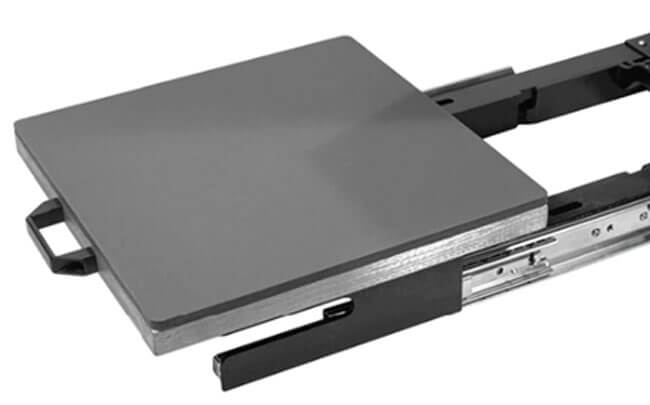
Being in the ‘draw’ style category, this type of heat press has been gaining popularity. I’m beginning to see them more and more at flea markets and pop up shops.
This style allows you to easily slide out the base platen. Similar to the swing away heat press, the drawer is a safety feature that reduces the chances of accidental contact while pulling and pressing the substrate. If you are as impatient and clumsy as I am, this is the press for you.
Top heat presses with slider trays:
- Stahls’ Hotronix Fusion IQ Heat Press
- HPN Signature Series 15 Auto-Open Slider Heat Press
- Stahls’ Hotronix Dual Air Fusion IQ Heat Press
Over-the-Center Pressure
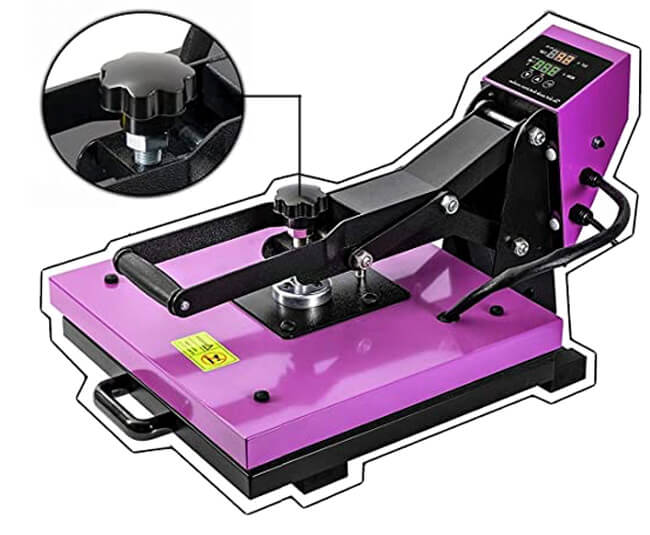
If you’re not getting constant, even, edge-to-edge heat and pressure distribution from your heat press, consider yourself losing the game. With uneven heat, adhesives on the transfer paper will not get activated, thus the image will not transfer to the garment.
The ‘Over-the-Center’ feature is especially useful when printing substrates of multiple thickness levels. It gives you the ability to adjust the pressure with a twist knob to ensure complete image transfer whether you’re pressing lightweight t-shirts or heavy hoodies.
Top heat presses with Over-the-Center Pressure Adjustment:
- HIX EVO TOUCH HT-400 Clamshell Heat Press
- Stahls’ Hotronix Hover Clamshell Heat Press
- Stahls’ Hotronix Auto Open Clamshell Heat Press
Precise Pressure Reading
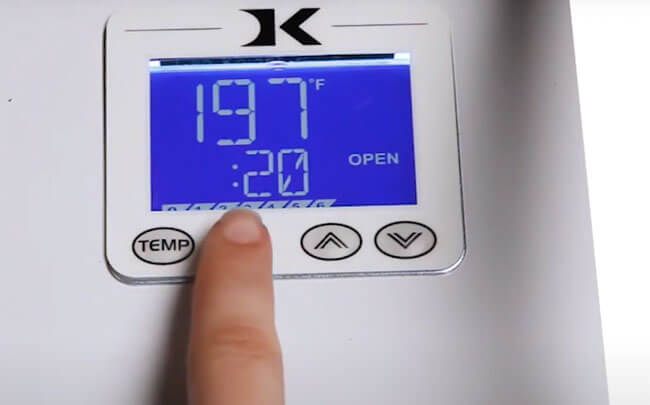
Now that you understand how important even heat distribution is, another important factor is the pressure reading, or rather how precise it is.
For manual heat presses, a twist knob controls the pressure. The adjustment levels are done by feel. While you don’t need a degree in physics to develop a feel for things, it can be a nuisance especially if you’re working with different substrates with different thickness levels. For example, having to switch between t-shirts for one client, then hoodies for another, and back to t-shirts again, all on the same day!
In this scenario, few heat presses offer methods that are more precise that will remove the guesswork for you. Some heat presses have patented pressure sensors built in while others use a height gauge or height indicator to provide accurate and repeatable pressure readouts.
Consider this feature if you are planning to press multiple substrates or provide service to clients with different requirements.
Top heat presses with precise pressure readings:
- Stahls’ Hotronix Hover Clamshell Heat Press uses a patented pressure sensor.
- The Geo Knight Digital Knight Heat Press uses a digital pressure Bar Graph
Pre-programmed Settings
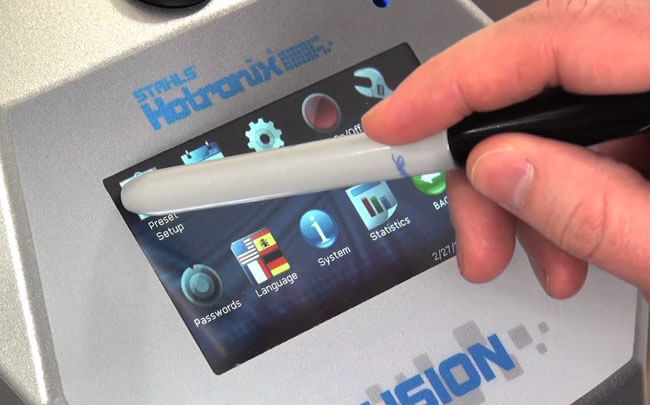
I would chalk this up in the nice to have category, not a need to have. But after hearing those that have a heat press with this feature, most say they definitely use it more than they thought they would, and if they were to buy it again, they’d do it again.
Although it really depends on how diligent you are at keeping track of things, I personally enjoy the fact that I’m a button away from switching between pressing plastisol transfers to vinyl to regular heat transfer.
This feature is especially helpful when pressing a variety of transfers on different substrates, each demanding multiple requirements from pressure, heat, and time.
“Think of it like an oven. You have presets for different recipes. This will not only save you time, but material as well.” says Tom of Good Stuff Screenprinting.
Top heat presses with user presets:
- Geo Knight Digital Combo Air Automatic Heat Press
- Stahls’ Hotronix Fusion IQ Heat Press
- HIX EVO TOUCH SwingMan 25 Swing Away Heat Press
Interchangeable Platens
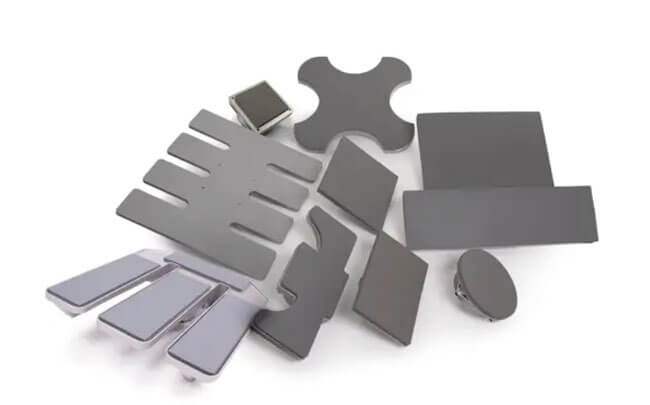
If you expect to heat press substrates other than t-shirts, you may want to consider a press with an interchangeable platen feature. From hats to bags to even shoes, you will be able to quickly expand your product options and provide more variety to your customers.
Interchangeable platens also allow you to heat press smaller items like neck labels to sleeves to face masks. All you need to do is remove and install a smaller sized platen for the job.
For heat pressing hats and caps, heat presses come with a lower platen called a ‘form’. Heat presses typically come with two sizes of forms, some come with five different sizes, allowing you to press a variety of caps and visors.
If you plan to heat press cups and mugs, most if not all machines these days offer full-wrap platens. However, there are two distinct differences in how heating a mug is done with one method being slower than the other.
The first press method is called rising temperature. In this method, the press starts off at a low temperature that rises to the desired temperature when the heat press lid is closed. The other method is called constant temperature where the temperature remains the same at all times.
The second press method transfers slower but is best if you are sublimating ceramic and metal travel mugs as rising temperature presses get too hot and too fast for metal.
Top heat presses with interchangeable platens:
- Stahls’ Hotronix MAXX 15 Heat Press
- Stahls’ Hotronix Auto Open Heat Press
- Geo Knight Digital Knight Clamshell Heat Press
And there you have it!
I hope the heat press features I’ve highlighted will point you in the right direction for what you need. Yes, there is a lot to take in, but even if you do not require them it’s better to understand the available options for the future.
So how do you choose the best heat press machine?
If you have already decided to purchase a heat press in the near future, then congrats are in order!
But before you do, I highly recommend checking out my in-depth article – How To Choose The Best T-shirt Heat Press Machine where I’ve compiled a ton of useful information based on my own experiences and that of other veteran printers. And while no one has the answer except yourself, here are five basic questions to ponder upon.
- What is your budget? A heat press machine is an investment. Spend too little and you might lose money in the long run if you can’t print specific jobs for clients. Spend too much and it’ll be longer to recoup your investment. I suggest figuring out the middle point. Even if you have enough money for the biggest and baddest press on the market, be conservative as you still need to buy a ton of materials like ink, blanks and everything in between.
- What will you be heat pressing? T-shirts? Hats? Mugs? Everything? The heat press opens you up to an unlimited amount of creativity but don’t get too wild. It’s always good to start small and gradually build up from there. Pick one or two items to start out. When you’re familiar you can then expand into other items.
- How big is your work space? You need to be comfortable where you work. A press that fits just nice in the corner will be aesthetically pleasing, but once the heat passes 300 you’ll wish you found an alternative. Again, check out this article to get an idea of what you’ll need.
- What kind of transfers do you press? Vinyl? Sublimation? DTF? Knowing this will determine what kind of heat press features you’ll need.
- Which brand of heat press should you buy? Advancement in tech and global distribution has given us more choices than ever before. However, I would say this really depends on your location. If you are in the US or Canada, brands like HIX, Stahls and HPN heat presses have always been the gold standard. If you’re in Europe or other parts of the world, Chinese made heat presses have come a long way since the 2000s and aren’t the cheap clunkers with failing heating elements anymore. Companies like Vevor offer sturdy, reliable workhorses that can rival the best made American presses. And the price isn’t too shabby either. But above all else, the main thing to consider is the after sales service you’ll get. Your heat press will break at some point, whether it’s a major or minor issue, you’ll want someone a phone call away.
I hope this article has shed some light into your search for the perfect heat press. In case you have questions, put them in the comments below.
